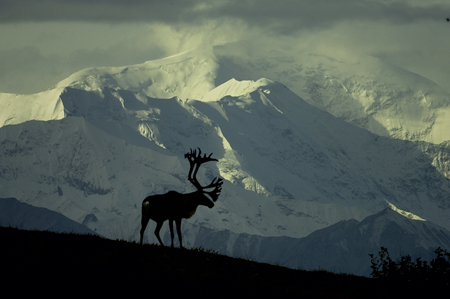

Bear with me a moment while I make this point …
On our trip to Denali for our most recent photo tour I spoke at length with a professional wildlife photographer/cinematographer. A round of fires had plagued Denali through the summer, and he was talking about how that soft, smoke-diffused light had actually helped him put together a film he was making.
He spoke about how the uniform diffused light had worked for 'walk throughs,' where shots made at different times, on different days, could be inserted into appropriate places to add interest and continuity to a film. Most cinemtographers work alone, and everything they film is generally shot with one camera at one time. For example, if a cinematographer was filming a chase scene involving wolves, all of the footage is made with one camera from one angle. Most chase scenes take place at a distance, shot with extremely long lenses. However, to give a film interest, 'walk throughs' are needed, where close-ups are added, perhaps showing a wolf watching intently, or slowly stalking toward the camera, or close-ups of the prey animal feeding, unaware of the approaching predator. Walk throughs can be shot earlier, or later, days or weeks later, but the sequences help to tell the story.
This is accepted film making. One lone videographer or movie-maker can't be two or three or four places at once, filming multiple angles at the same time, so to add interest sequences are added later to flesh out the story. And, provided the light hasn't changed (like the constant, diffused light of this Denali summer), the viewer may believe he's seeing a true story as it plays out. The reality is, the wolf or wolves chasing the caribou may have been dead asleep moments before the chase, or completely invisible to the camera until the moment of the chase, yet the filmed story implies otherwise in its effort to tell the complete story.
Recently, for example, I saw a BBC film where lions were shown chasing prey, supposedly at night. The earlier sequences were indeed filmed at night with an infrared light, but the actual chase, and the kill depicted, was filmed in daylight, but altered by a filter or by digital enhancement to appear as if it were filmed at night. The color of the various sequences matched, but the lighting and shadows did not, and whereas the true infrared sequences were made with a rather tight beam (there's only so much area an artificial light source can illuminate at night on the African plains), the chase/hunt/kill sequence took place over several hundred yards. If you didn't know light, or how impossible it would be to actually illuminate such a broad area, you'd never suspect that the film was a collage. Certainly, the sequence did tell a story and I'd suspect that a disclaimer may have been added at the end of the film, but I missed that.
Okay, so what is my point? In an earlier Question of the Month I suggested a code label be given to DIGITAL STILL IMAGES that were enhanced in some way, perhaps by compositing two exposures when the latitude for one image was just too great, or compositing for focus, or cleaning up a distracting background. I suggested using the letters DEC for Digitally Enhanced Composition. Nothing like this presently exists, but a digital image, if worked on in any fashion, and if this work admitted to, can produce a stigma of being untrue, 'Photoshoped,' or 'manipulated' with the value of that image then being diminished. Yet, in an analogous fashion, other illustration mediums like wildlife art and wildlife film-making, are held to a much different standard.
I don't have an answer to the question
I've just posed - What is the Difference - but I post this to
perhaps generate some discussion, some thought, and perhaps, with
time some consensus that will allow a digital shooter to do a
DEC and to not have his or her work devalued because of this.
Time will tell.
|
|
|
|
Flash-Remotes |
|
NANPA |